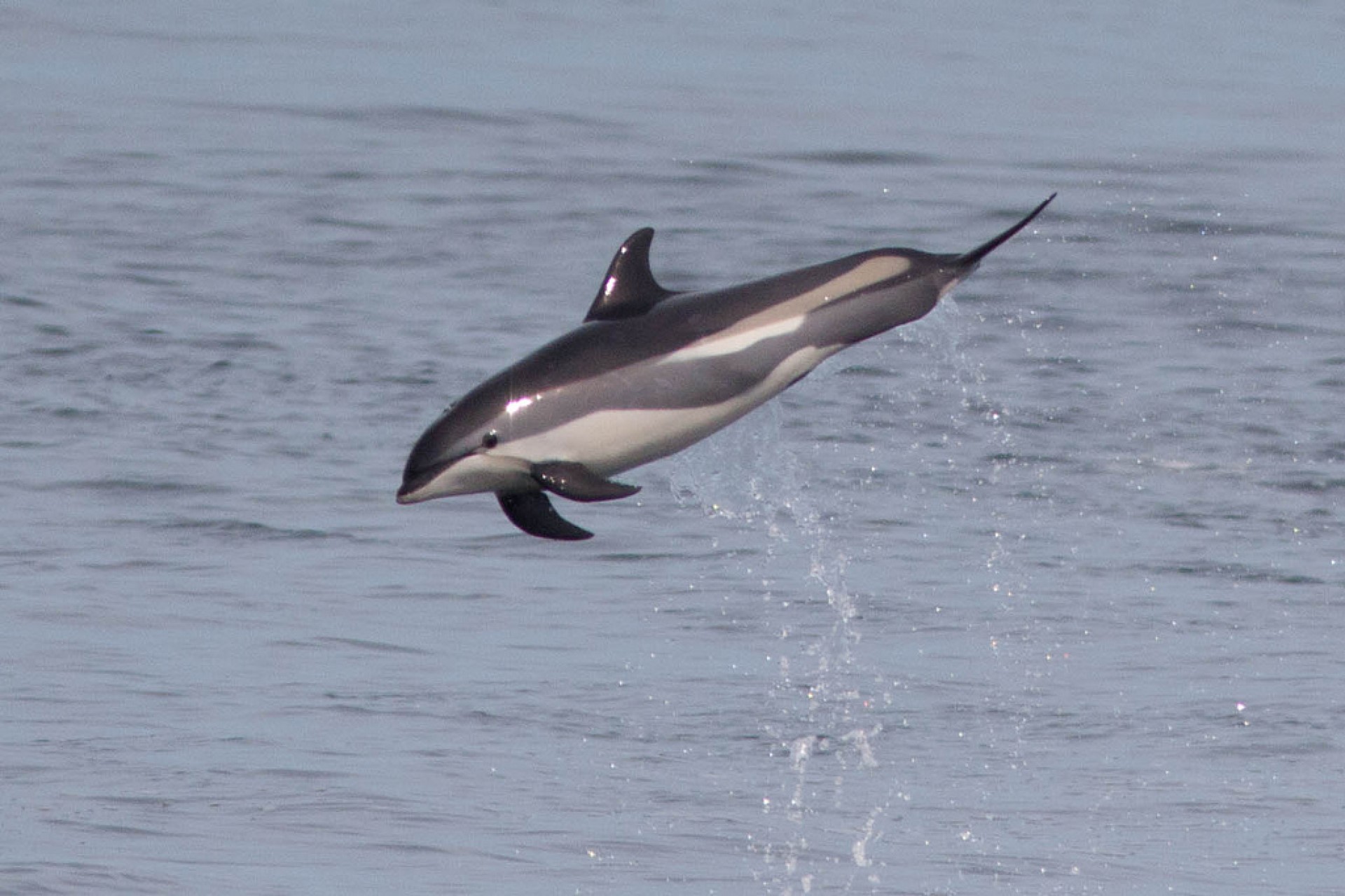
Atlantic white-sided dolphin
The dolphin is slightly larger than most other oceanic dolphins. It is just over a meter in length at birth, growing to about 2.8 m (9.2 ft) (males) and 2.5 m (8.2 ft) (females) at maturity. Females reach sexual maturity at between 6 and 12 years, and males between 7 and 11 years. The gestation period is 11 months and lactation lasts for about 18 months — both typical figures for dolphins. Individuals are known to live for at least 17 years.
The key distinguishing feature is the white to pale yellow patch found behind the dorsal fin of the dolphin on each side.
Groups found off Newfoundland generally number around 60 while those found near Iceland much smaller. The diet of Atlantic white-sided dolphins includes mainly herring, hake and squid. However, they consume a large variety of prey including small mackerel and various bottom fish. They have been observed to cooperatively hunt on the surface. It has been suggested that larger groups split while feeding.
The estimations for the U.S. shelf and shelf-edge water suggest that the population size is about 300,000. Additional 120,000 individuals have been estimated to spend summer in the Gulf of St.Lawrence. In the eastern North America waters the numbers increase southwards in winter and spring in association with cold waters from the Gulf of Maine. The International Union of the Conservation of Nature (IUCN) currently classifies Atlantic white-sided dolphins as Least Concern. The North and Baltic Sea populations of the Atlantic white-sided dolphin are listed on Appendix II of the Convention on the Conservation of Migratory Species of Wild Animals. They are listed on Appendix II as they have an unfavourable conservation status or would benefit significantly from international co-operation organised by tailored agreements. These species of dolphin are known to fall victims to in a polluted environment, a study from 1997 confirmed that the British and Irish populations of Atlantic white-sided dolphins to succumb to these effects.
Below is a list of any articles we might have written on the species, and below that is a video. Below this, we are hoping to add many links that will help you see these in the wild. If you work in tourism of this species or hospitality where they live, we would be interested in listing your services on here, to help people come and visit.